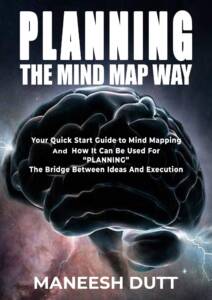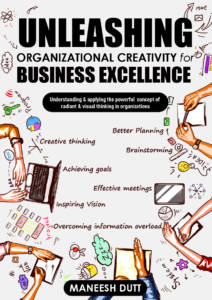An organisation chart is an immediate reflection of the clarity of thoughts of the top management. Hence, many a times, it is easy to judge the level of business excellence in an organisation simply by looking at its organisational structure. As part of my workshops and consultancy across industry sectors I often come across a variety of Organisation Charts. Some are clean and easily understood; but there are others which are quite ambiguous, resembling a complicated electronic circuit diagram!
There are many tools available for making an organisation chart (excel spreadsheets, word, Powerpoint, Mind Maps, sketch pad etc,..) but these are of secondary importance. Independent of the tools, I use a simple 5 step approach for helping organisations build a robust organisation chart. Before I get into the technique (the HOW part) lets quickly refresh ourselves with the 4W’s (WHY, WHAT , WHEN, WHERE) of an Organisation Chart.
WHY is it required?
To help implement the organisations vision and long term strategy by channelizing the energy of its resources.
WHAT is it?
Very simply put it is a structure which maps the organisation’s departments/functions to its resources.
WHEN to use it?
For planning your growth strategies, while defining long term plans, for introducing the organisation to everyone from external stakeholders to new joinees, setting annual goals etc.
WHERE to use?
Mid to large sized organisations cannot escape using an organisation chart however I recommend even start ups to formalize their organisational structure as early as possible.
With that lets look at the 5 steps (the HOW part) for making effective organisation charts:
- Understand Your Stakeholders Expectations: Once you have clarity about your organisational Mission/Vision , take time to understand and map your stakeholders expectations. Include all possible stakeholders at this juncture from your board members to your end customer. If necessary you could even do a quick survey with them to identify their expectations from your organisation.
- Build your Core Functions: With the stakeholders expectations being clear it becomes easy to identify functions/departments responsible for revenue generation. This becomes your core functions (product/services lines) and should be marked/identified on your organisation chart as a first step. Keep in mind that these are mostly external facing functions responsible for creating product/services going beyond the organisational boundaries.
- Now Map the Central/Support Functions: Once the core functions are in place there is a need to create an internal environment to enable and support their efficient and effective functioning. Thus the need for central functions such as HR, Finance etc. which have a more internal role to play, of course picking up best practices from the external environment. It helps to have a separate block for central functions on your organisation chart since I have seen way to often organisation charts wherein the central functions and core functions are kind of mashed up together creating ambiguity throughout.
- Assign People to Functions: By this step all the organisational blocks identification has been done, minus the employees, to ensure that the organisational chart is aligned as closely as possible to the mission, strategy and the stakeholders expectations. Now is the time to assign employees with the right competencies to the various functions and in the process probably identify skill gaps in the organisation. This approach will help avoid any people centric bias while constructing your organisation chart.
- A Final Alignment check: Once you are through with the above steps it is a good idea to quickly check the alignment of your organisation chart with the company’s mission , vision, strategy and goals. If the previous steps have been done well you should normally not have any major surprises here but all the same if necessary keep iterating till you are satisfied.
And of course an organisation chart needs to be revisited both periodically as well as when there is any major internal/external triggers impacting the organisation. So keep your organisation chart alive with regular reviews and updates when required.
Need help building your organisation chart? Drop me a message by clicking here.



